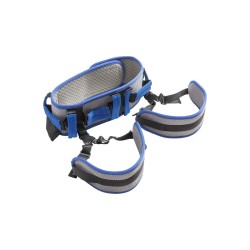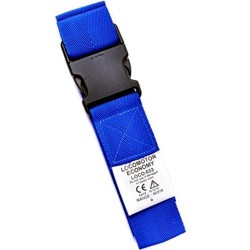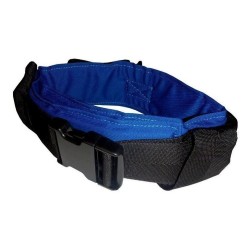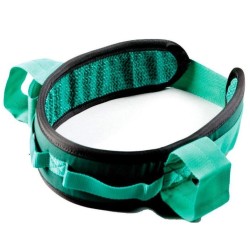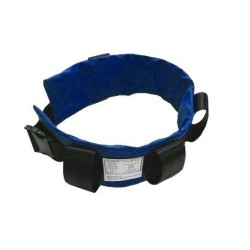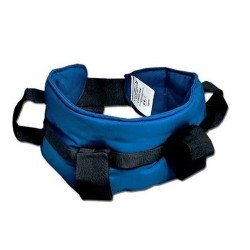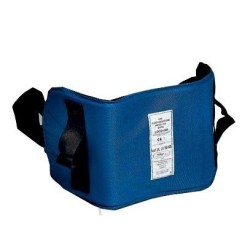Patient Handling Belts
There are 9 products.
Active filters
About Patient Handling Belts
Supportive Belts for Safe Assisted Walking and Transfers
Patient handling belts provide essential assistive devices enabling carers to support patients during walking and transfers safely across hospitals, care homes, rehabilitation facilities, and healthcare settings throughout England, Scotland, Wales, and Northern Ireland. These purpose-designed belts, also known as transfer belts or gait belts, secure around patients' waists providing firm gripping points enabling carers to assist with standing, provide stability during walking, support transfers between surfaces, and prevent falls through secure holding. Healthcare environments utilise handling belts for assisting patients during walking practice in rehabilitation, supporting unsteady individuals preventing falls, facilitating transfers providing secure holds, enabling bathroom assistance maintaining safety, and managing fall risks in patients with balance difficulties or cognitive impairment. Modern handling belts incorporate features including strong webbing withstanding transfer forces, secure buckles preventing accidental release, padded surfaces enhancing patient comfort, varied sizes accommodating different waist dimensions, and strategically positioned handles providing optimal gripping points. The provision of patient handling belts demonstrates commitment to safe manual handling practice, reduces fall incidents through secure patient support, supports rehabilitation through walking practice assistance, and enables dignified mobility support across professional care environments.
The implementation of patient handling belts directly supports CQC compliance through enhanced patient safety during assisted mobility, fall prevention through secure support, and demonstration of appropriate assistive equipment provision. Assisting patients with mobility without appropriate equipment poses risks including patients pulling carers off balance, insecure holding of clothing or limbs potentially causing injury, difficulty controlling patient movement during falls, and staff musculoskeletal injury from awkward holds. Handling belts address these challenges by providing secure gripping points enabling controlled assistance, distributing support forces across stronger body areas rather than arms or clothing, enabling carers to provide stability without awkward holds, and supporting controlled lowering if patients become unstable. Clinical applications include post-operative mobilisation providing security during early walking, stroke rehabilitation supporting walking practice whilst function recovers, frailty management preventing falls whilst maintaining mobility, cognitive impairment providing security for patients with poor safety awareness, and general rehabilitation enabling progressive mobility development. Healthcare organisations benefit from reduced fall incidents when secure support is provided, prevented staff injuries through appropriate assistive techniques, enhanced rehabilitation outcomes through enabled walking practice, and improved confidence amongst staff and patients. Modern handling belts incorporate safety features such as quick-release buckles for emergencies, colour coding, and antimicrobial materials throughout England, Scotland, Wales, and Northern Ireland.
Selecting and implementing patient handling belts requires assessment of patient needs, appropriate equipment specification, and comprehensive training across healthcare facilities throughout the UK. Organisations should evaluate patient populations determining who requires handling belt support, assess clinical applications including walking assistance versus transfer support, and calculate equipment requirements ensuring availability across care areas. Equipment selection should prioritise appropriate size range accommodating varied patient waist dimensions, strong construction withstanding transfer forces, secure buckles providing reliability, and comfortable materials preventing patient discomfort during use. Implementation protocols must encompass comprehensive staff training on safe handling belt use including proper fitting ensuring security without excessive tightness, appropriate gripping and positioning techniques, walking support methods, and emergency procedures if patients fall. Quality assurance measures should include regular equipment inspection checking for wear particularly buckles and webbing, documented replacement schedules, cleaning protocols maintaining hygiene, and monitoring of handling belt-related incidents. Modern handling belts incorporate features such as padded handles reducing carer hand strain, multiple grip positions, and machine-washable construction. Organisations should establish clinical protocols identifying appropriate handling belt use, integrate with manual handling policies and fall prevention strategies, and maintain equipment inventories tracking provision and condition. Individual care plans should document when handling belts are appropriate, specific techniques or precautions, and goals for mobility development. Staff education should address proper handling belt technique, recognition of inappropriate use including reliance on belts for patients requiring hoisting, and limitations including inability to prevent all falls. Practice considerations should emphasise that handling belts assist with mobility but do not prevent falls in all circumstances, appropriate assessment remains essential, and belts complement rather than replace proper manual handling technique. By implementing patient handling belts alongside professional training and protocols, healthcare organisations throughout England, Scotland, Wales, and Northern Ireland demonstrate their commitment to CQC standards, fall prevention through appropriate mobility support, staff protection through safe assistive techniques, rehabilitation support enabling walking practice, and provision of equipment that enhances safety during assisted mobility whilst supporting independence development across all care settings requiring mobility assistance.

